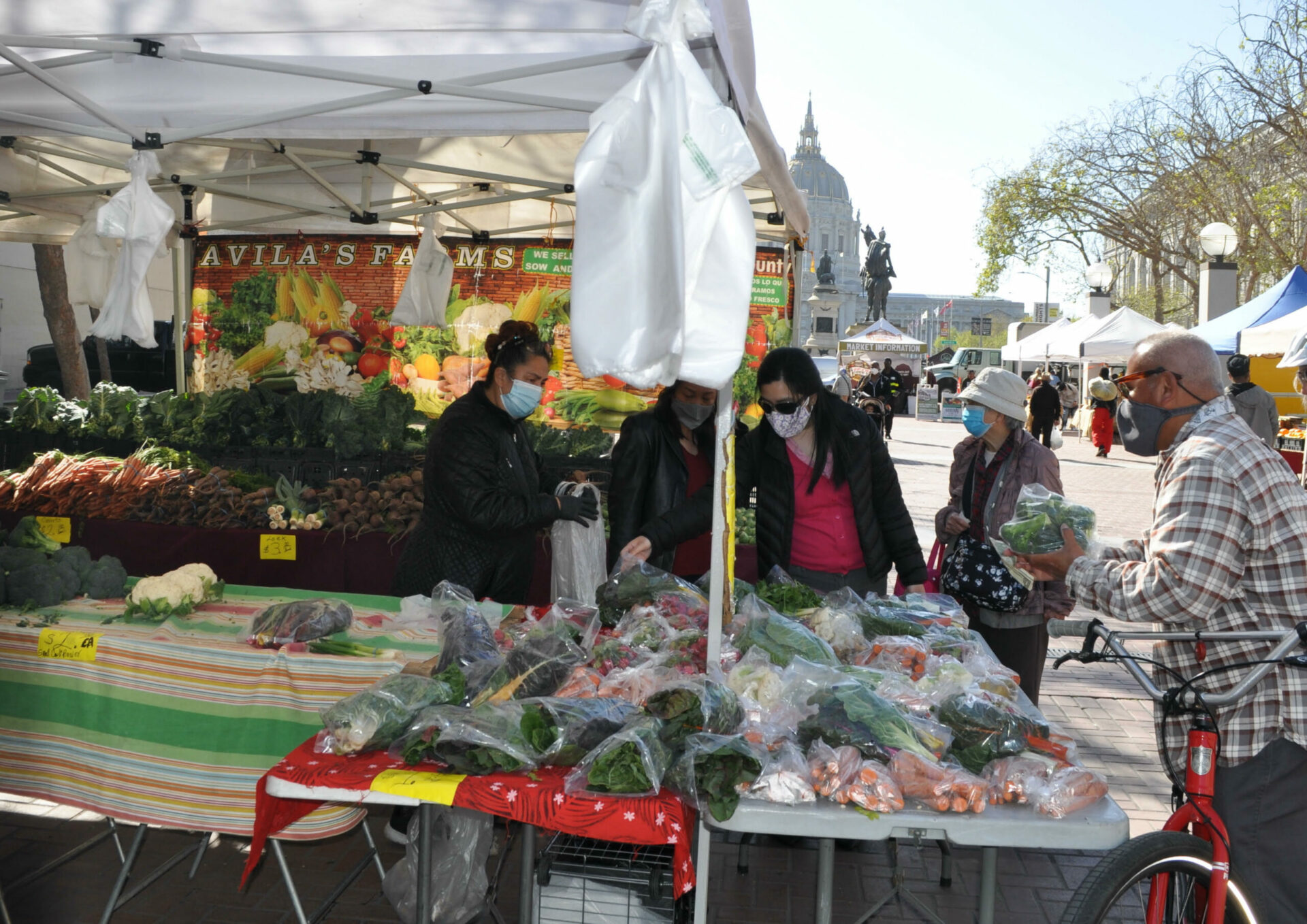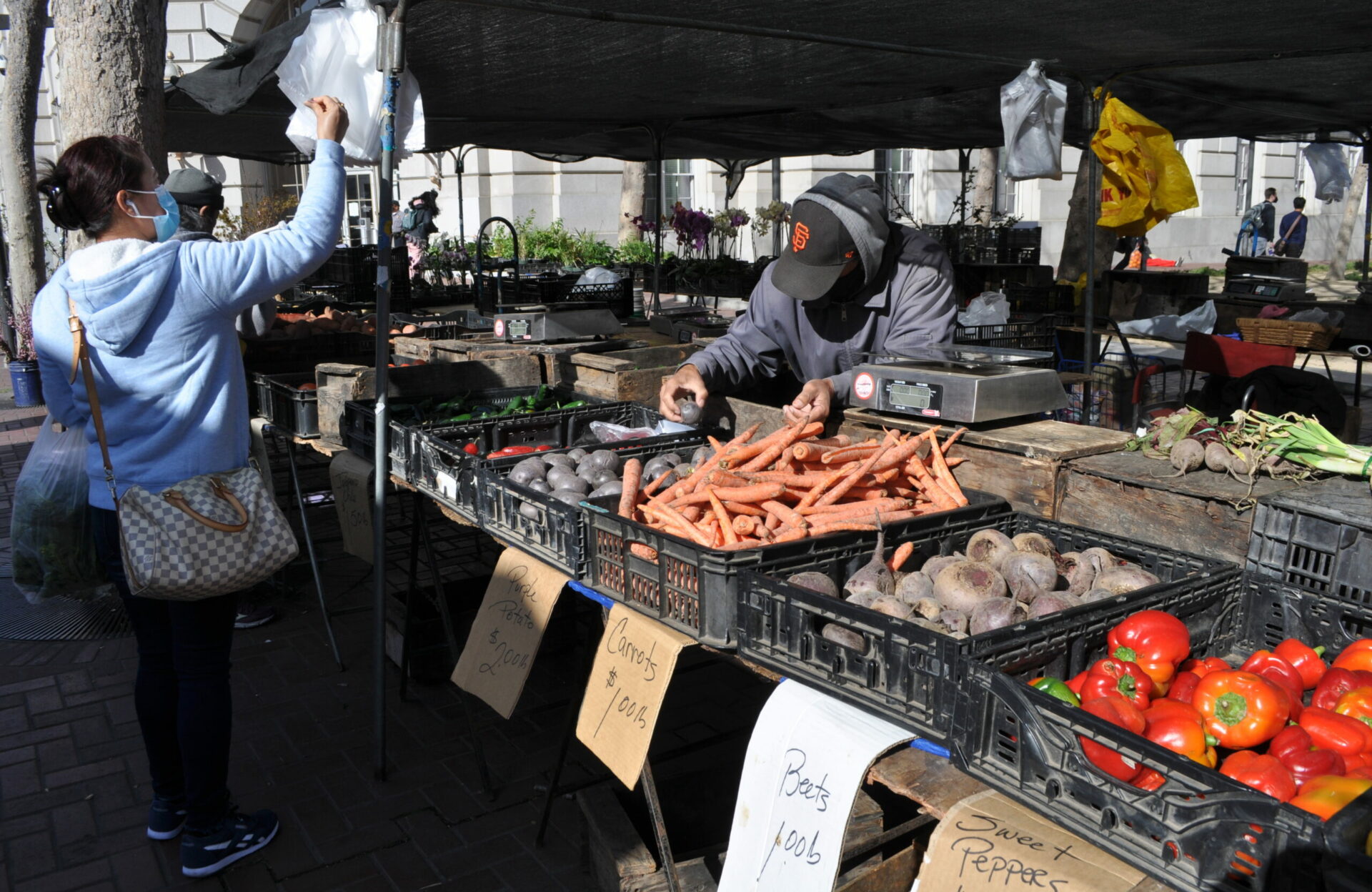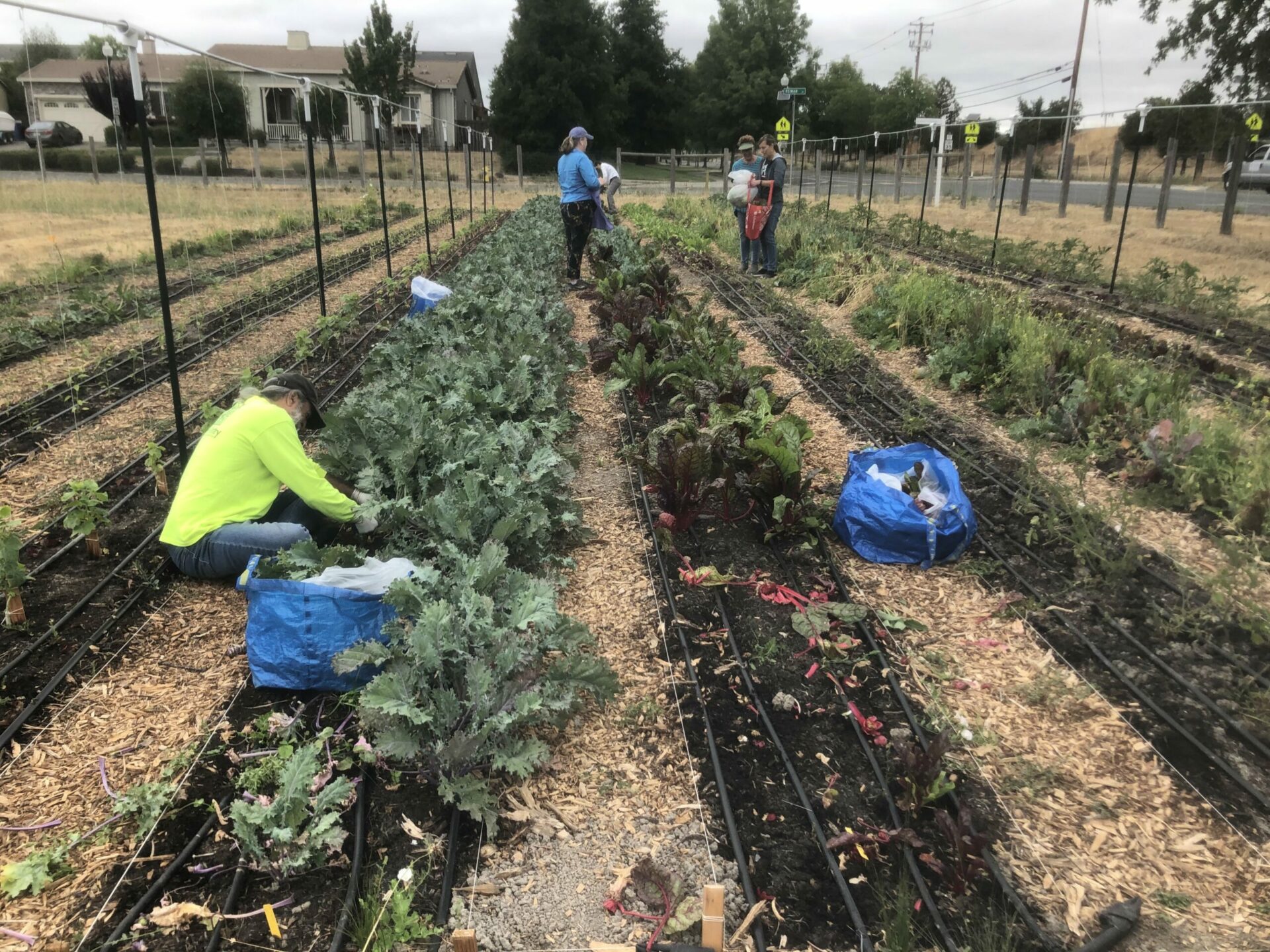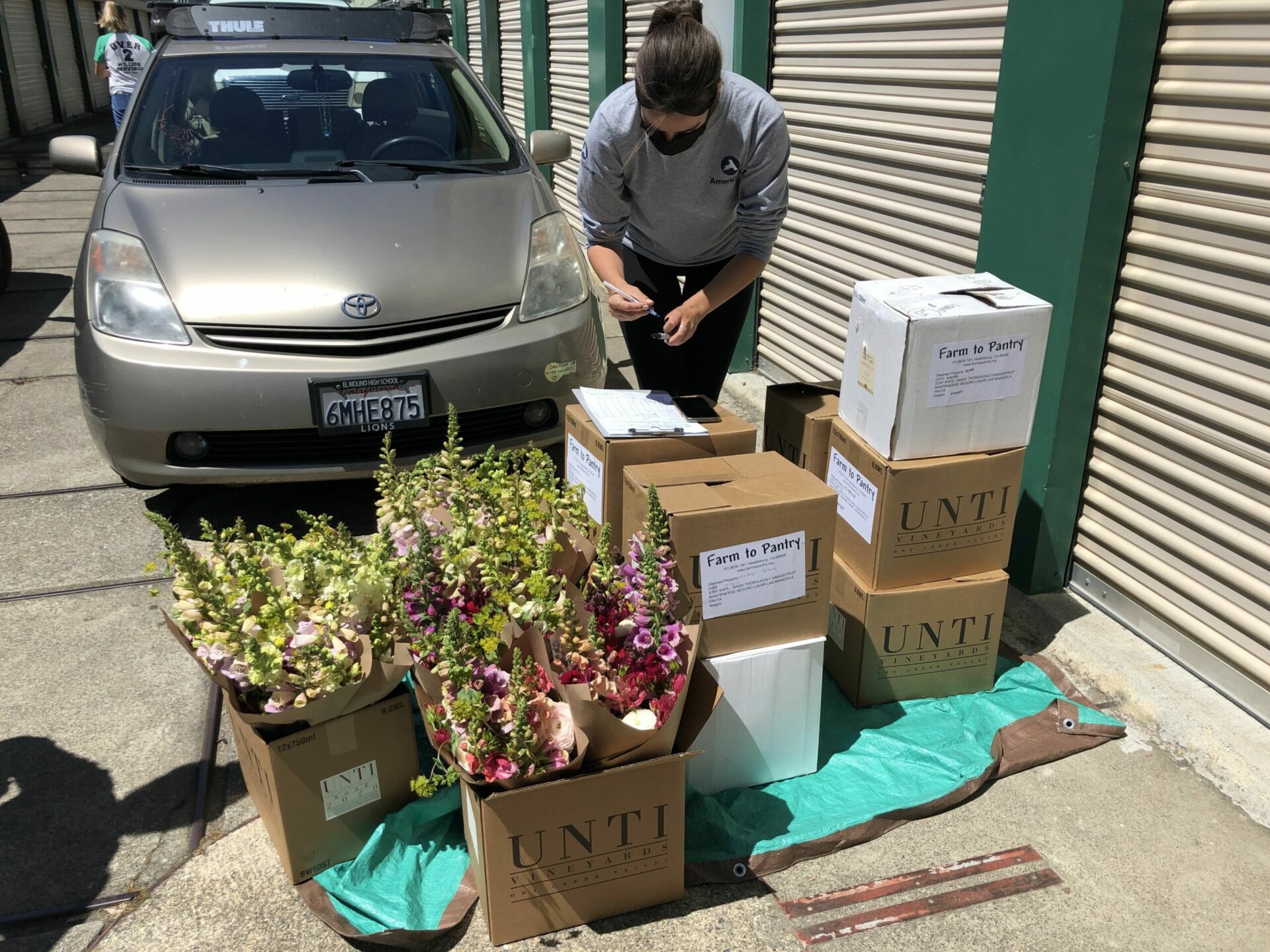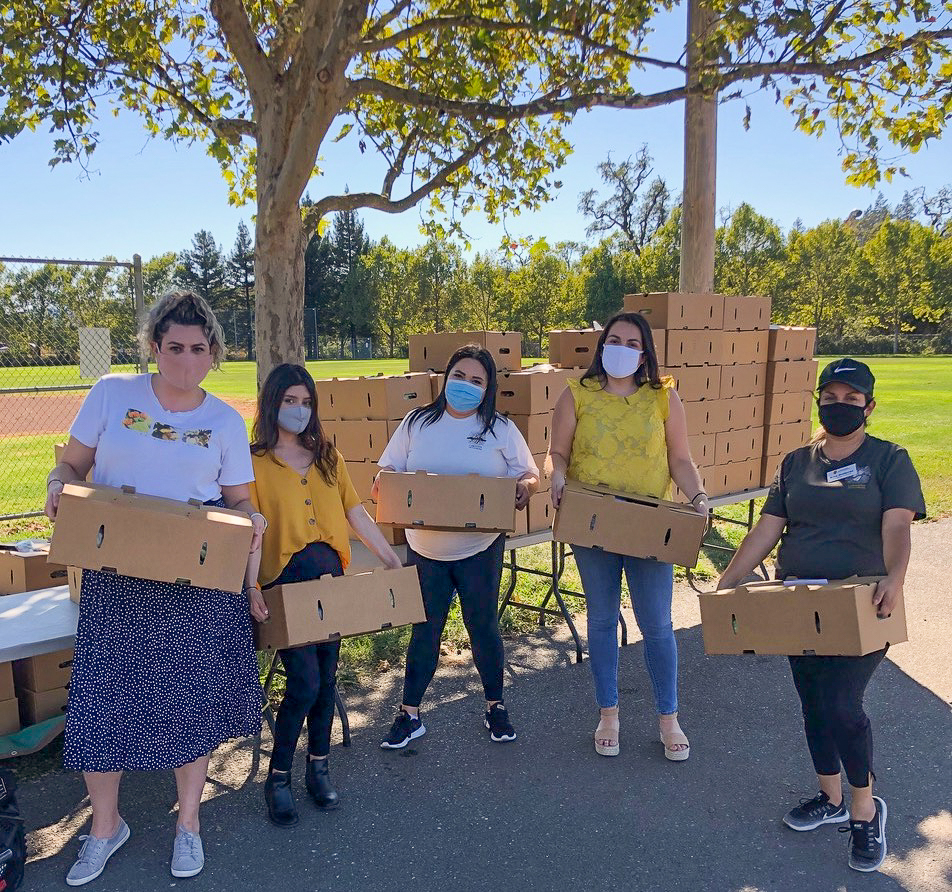Pandemic Spawns Local Foods Revival
“There was no local food sitting in the Suez Canal or in the ports of Long Beach [during the global supply chain crisis].”
When COVID-19 swept across the Bay Area and the nation, shutting things down in March 2020, longtime San Francisco resident Michelle Kilkenny sought ways to help and build community with others — particularly the farmers who produce our food. As the pandemic began to separate and isolate us all, Kilkenny turned to the Ferry Plaza farmers’ market, where she’s been buying fresh local food for 20 years.
Constrained by the pandemic, this was not your normal farmers’ market bustling with throngs of customers crammed together sampling items on toothpicks in the open air. Instead, Kilkenny and a crew of eight fellow volunteers gathered at the Ferry Plaza at 7 A.M. each Saturday, masked and six feet apart, shopping for other customers. “I’d get a big cart and go farmer to farmer,” Kilkenny recalls, picking out the “finest, best, most seasonal produce” for customers who signed up to receive these food subscriptions.
While volunteering and packing these CSA (community-supported agriculture) boxes for other customers, Kilkenny also subscribed to two heaping boxes of produce for $85 a week, sharing the fresh sustenance with four families. “I was able to provide for people in the restaurant industry who lost their jobs,” she says.
During this effort, Kilkenny recalls, “I got to really know the farmers. What was most amazing was the farmers’ commitment to providing food. They showed up every Saturday morning.” The farmers, she adds, “had to have been scared” of getting COVID-19 but came to provide food anyway. “Their resiliency was just so impressive.”
Kilkenny wasn’t the only one looking for this combination of fresh local food and community. As Christine Farren, executive director of the San Francisco-based Center for Urban Education about Sustainable Agriculture (CUESA) puts it, “coming to the farmers’ market became the one safe event where people could socialize, see other people, feel some normalcy in their lives.” Additionally, she notes, “shoppers understood that ‘If I don’t buy their food, these farmers will go out of business.’”
Indeed, when the pandemic slammed home, relationships that farmers spent years cultivating with chefs and restaurants were suddenly imperiled, Farren recalls; “overnight, the restaurants couldn’t open and couldn’t buy food,” and farmers immediately lost sales. So CUESA “stepped in to create this [CSA] box, with different offerings to meet people’s needs, to keep their relationship between the customer and the farmer.” For 17 months in the toughest periods of the pandemic — from April 2020 to August 2021 — CUESA’s “Feed Hospitality” effort distributed more than 3,000 produce boxes to hospitality workers in need while putting over $100,000 into farmers’ pockets, according to Farren.
The project, Farren says, was “a way to make sure farmers’ produce went to people in need. The produce was already in the ground, so there was no wasted food.” The initiative supported many farmers who were first-generation, LGBTQ, and people of color.
CSA Surge
According to Evan Wiig, director of membership and communications for the Community Alliance with Family Farmers (CAFF), there has been “no greater surge in demand for CSAs than in the first six months of the pandemic. Folks wanted to buy local, get trusted sources of food, and avoid supermarkets.” In March 2020, Wiig recalls, “farms were struggling to meet demand,” and by the end of that month “there were waiting lists for CSAs.”
Before the pandemic, CSAs nationwide had been on the decline since 2016, Guillermo Payet, president of Local Harvest, said in an email — “mainly as a result of ferocious competition from well-capitalized meal-kit companies, targeting the same markets.” But the first few weeks of the pandemic saw “a huge boost in demand,” with sales nearly doubling. “Most of the CSAs we work with were sold out for most of 2020,” Payet wrote. The number of CSAs listed on Local Harvest’s website soared from 7,500 in January 2020 to 8,394 today.
A group called Farm to Pantry harvests from local growers to supply people in need. Photo: Farm to Pantry.
Black mussels sourced from the Tomales Bay Oyster Company and delivered by Ocean2Table. Photo courtesy Ocean2Table.
At Ocean2Table, a community-supported fishery in Santa Cruz, “We went from making 150 home deliveries [a week] to closer to 300 during the peak of the pandemic,” says company co-founder Charles Lambert. Since launching in 2014, Ocean2Table has primarily provided weekly on-demand deliveries of locally caught seafood to subscribers. “Eighty percent of what we deliver is within 40 miles of headquarters,” says Lambert. But when the pandemic began, “customers asked for more,” and based on that feedback, Lambert says, “We’ve been doing the full gamut since then,” augmenting their seafood with pasture-raised chicken, wild forage mushrooms, and other local foods.
To the north in Sonoma County, Farm to Pantry volunteer crews of gleaners — gathering fresh, edible yet imperfect produce left unpicked in farm fields — have grown by ten-fold since just before the pandemic in 2019, now boasting 500 people gleaning on 400 farms, says executive director Duskie Estes. The group delivers this food, which would otherwise go to waste or compost, to poor residents in need. “Our volunteering was outside, six feet apart, a way to help the community and stay safe at the same time,” says Estes.
Collaborating with Feed Sonoma — one of just two agricultural cooperatives in California, along with the Bay Area Ranchers Cooperative — Farm to Pantry purchases and delivers CSA produce boxes to economically marginalized residents, with funding from Growing the Table. Together, these initiatives have stepped up CSA distributions during the pandemic, helping both farmers and low-income consumers in the process. During its height amid the depths of the pandemic, Growing the Table was delivering 300 CSA boxes a week to people in need, according to Estes. Now, however, “we are sharing 62 boxes a week,” and funds will expire in June unless new fundraising efforts succeed.
Buying Local May Boost Resiliency
As the pandemic’s severity has waned (at least for now), the CSA surge has tapered. Payet observed, “The public seems to be slowly reverting to pre-pandemic patterns. While we’re working with more CSAs, and some of them continue to grow, the average CSA is selling about 8% less per week now than at the peak of the pandemic boost.” Still, advocates remain upbeat about the revival of CSAs and local food.
While supporting local farmers, CSAs (as well as farmers’ markets) can bolster communities’ food resiliency and reliability in a time of global supply chain and climate upheavals. As CAFF’s Wiig puts it, “There was no local food sitting in the Suez Canal or in the ports of Long Beach” during the global supply chain crisis. Local food and CSAs “distribute that risk far more than these global supply chains,” Wiig adds. “Any time a community is dependent on global supply chains, they are at risk.”
Of course, local food can be anything from a giant non-organic monoculture operation producing food ingredients for a big food corporation, or a smaller diversified organic farm that feeds the community and replenishes soil and habitat. In recent years, some reports have insisted that local foods are not a climate boon in terms of carbon footprint, since shipping is a small portion of food sector emissions. Much depends on how these farms and ranches treat the soil, land, water, and air. Still, the average food item travels about 1,500 miles to get to the consumer, generating plenty of climate-altering emissions by train, plane, truck, and ship.
In the Feed Sonoma co-op, all the farmers use organic or regenerative practices (such as crop rotations, diversified production, cover cropping, and other soil health measures), and half are women-owned, according to Estes. “We all see the timebomb, with all the fires. We all see the need to turn things around now.” Consumers’ choices can have a big impact, and “how people farm is huge,” she says. Just in the past year, Farm to Pantry gleaners gathered 350,000 pounds of food that would have gone to waste, Estes adds — that’s 1.4 million servings, “equivalent to taking 76 cars off the road for a year.”






